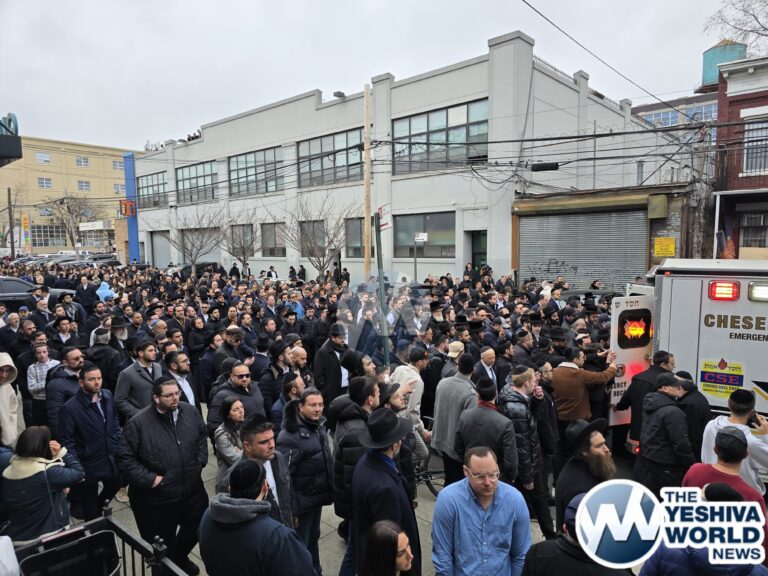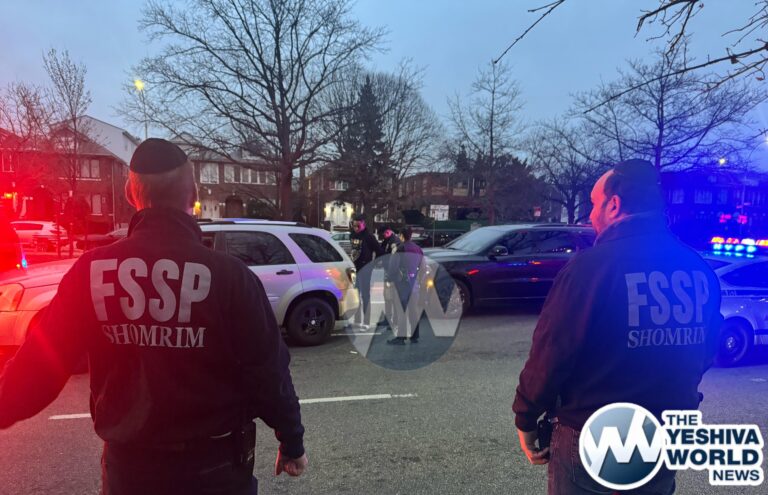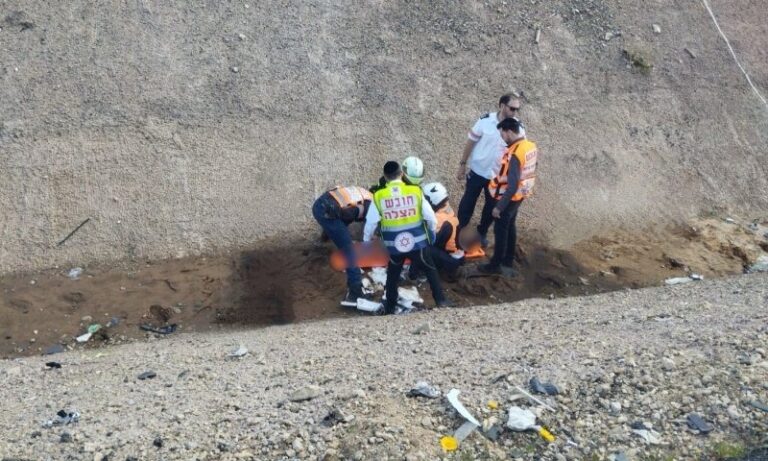 When one begins construction in an area which contains fruit trees the question arises if one is allowed to cut them down. This is a very common issue when doing construction in the mountains where there are a lot of fruit trees. Many people are not aware of the halachos that pertain to this issue and hopefully after learning through the halachos in this issue one will be more knowledgeable in this area.
When one begins construction in an area which contains fruit trees the question arises if one is allowed to cut them down. This is a very common issue when doing construction in the mountains where there are a lot of fruit trees. Many people are not aware of the halachos that pertain to this issue and hopefully after learning through the halachos in this issue one will be more knowledgeable in this area.
The Source / Reason
The posukim in Parshas Shoftim[1] tell us “when you lay siege to a city for many days do not destroy the fruit trees there by swinging an ax because from them you will eat. A tree which is not going to be a fruit tree you may destroy.”[2] The Chinuch[3] says the reason for this mitzvah is to teach people to love and respect good things. This love will help ensure that they will keep away from bad, destructive things. The way of good people is to be happy with the world and not to destroy even a mustard seed.
Danger
Besides being a mitzvah mentioned in the Torah not to destroy fruit trees, Rav Yehuda Hachassid mentions this inyun in his will as one of the items which can be a danger.[4] The aspect of danger is also mentioned by many poskim.[5]Rav Chanina blamed the untimely death of his son on his son’s having cut down a fig tree when it was still bearing fruits.[6] The Gemorah[7] says one who cuts fruit trees will not see a good sign all his life. The poskim grapple with the uncertainty if this is an issur or a danger.[8] Some say that Rav Yehuda Hachassid added that even if in a certain situation it may be permitted to cut down a fruit tree (as will be discussed later in this issue) one should still not cut it down.[9]
In Eretz Yisroel vs. Chutz L’aretz
Although some say this issur only applies in Eretz Yisroel,[10] this is not the overwhelming opinion and one should not rely on it.[11]
Need for the Place
There is a discussion in the poskim if one is allowed to cut down a fruit tree when one needs the space where the tree is located. Some say if one needs the place in order to build something there it is permitted,[12] but for an extension etc. which is not needed it is not allowed.[13] Others are stringent in any case.[14]
If Permitted – Does Danger Exist?
There is a big discussion in the poskim if one is permitted according to the letter of the law to destroy a fruit tree does some level of danger still exist if one were to destroy the tree, or once it is permitted according to the letter of the law then no danger exists at all. The opinion of the Yaavetz[15] and others[16] is that even though a fruit tree may be permitted to be cut down in certain situations one is forbidden to do so because the danger still exists and this the reason why the son of Rav Chanina died. However, the consensus of most poskim is not in accordance with the stringent view and l’maseh if it is permitted to cut down a fruit tree one may do so without being concerned for any danger.[17]
Selling the Tree to a Non-Jew
Some say although one may be lenient and cut it down when it is permitted, one may sell the property containing the tree to a non-Jew who may cut it down.[18] Before selling the property one should dry out the tree.[19]
Telling a non-Jew to cut the Tree
According to some poskim one may not tell a non-Jew to cut down the tree since the non-Jew is the agent of the yid it is considered as if the yid is cutting it down himself.[20] Others say one may tell a non-Jew to cut down the tree.[21]
For Mitzvah Purposes
One is permitting to cut down a fruit tree in order to do a mitzvah with the property.[22] Accordingly, one may cut down a fruit tree down in order to build a mikvah,[23] shul[24] cemetery, etc.[25]
Branches
According to the opinion of many poskim the issur is only to cut down the fruit tree itself and cutting branches of a fruit tree is permitted.[26] This is true even if the branches contain fruit. This is very common when one is cutting branches to place on top his succah.[27]
[1] 20:19-20.
[2] Refer to Rambam Hilchos Melachim 6:8, Rosh Bava Kama 8:15, Taz 116:6, Be’er Heitiv 116:8, Chuchmas Adom 68:7, Kitzur Shulchan Aruch 33:11, Aruch Ha’shulchan 116:13, Kaf Ha’chaim 85. Some mention why this din is not brought in Shulchan Aruch. (Refer to Taz Y.D. 116:6, Shevus Yaakov 1:159, Minchas Elazar 3:13:page 9b).
[3] Mitzvah 529.
[4] Item number 45 on list.
[5] Chuchmas Adom ibid, Kitzur Shulchan Aruch ibid, Aruch Ha’shulchan ibid, Kaf Ha’chaim ibid.
[6] Mesechtas Bava Kamma 91b.
[7] Mesechtas Pesachim 50b, see Maharsha. Refer to Shemiras Haguf V’hanefesh 250:footnote 1:page 623, Modanei Yom Tov 2:pages 27-28.
[8] Refer to Madanei Yom Tov 2:3:pages 24-25.
[9] Mekor Chesed 62. Refer to Shemiras Haguf V’hanefesh 250:footnote 1:page 622.
[10] Shem Aryeh Y.D. 27, see Darchei Teshuva Y.D. 116:51.
[11] Eitz Hasadeh 1:footnote 11.
[12] Rosh ibid, Taz ibid, Chuchmas Adom ibid, Kitzur Shulchan Aruch ibid, Aruch Ha’shulchan ibid, Darchei Teshuva 116:51, Heishiv Moshe Y.D. 37:page 19, Yabea Omer Y.D. 5:12, Ohr Yisroel 18:pages 58-64.
[13] Kaf Ha’chaim 116:85, see Chavos Yuer 195. Refer to Mahari Beisan 101 (pages 69b-70b) who says cutting a fruit tree down is permitted for any purpose.
[14] Bais Yaakov 140.
[15] Sheilas Yaavetz 1:76, see Gilyon Maharsha Y.D. 116:6.
[16] Chai Shaul 1:23, Minchas Elazar 3:13. The Divrei Yoel 1:92:9 says he has a kabbalah from his Rebbe that this is the din. See Darchei Chaim V’sholom 865.
[17] Natei Surok Y.D. 42, Bais Shlomo Y.D. 1:191, Divrei Chaim Y.D. 57, Be’er Chaim Mordechai O.C. 2:17, Aruch Ha’shulchan 116:13, Yabea Omer Y.D. 5:12:3, Yechaveh Da’as 5:46, Shevet Ha’Levi 6:112:3, Modanei Yom Tov 2:pages 25-26.
[18] Bais Shlomo ibid, Bais Yitzchok Y.D. 1:142, Be’er Chaim Mordechai O.C. 2:17, Yabea Omer Y.D. 5:12:5-7, Shevet Ha’Levi 5:95, Kinyan Torah 1:39, 5:91:2, Ohr Yisroel ibid.
[19] Shevet Ha’Levi 6:112:4.
[20] Besaim Rosh 334, Be’er Moshe 5:137, see Shemiras Haguf V’hanefesh 250:6:footnote 7 in depth.
[21] Ikrei Hadat Y.D. 14:8, Neta Serok Y.d. 42, Tov Tam V’das tlisa 2:8, Binyan Tzion 1:61, Maharsham 1:22, Hag’oes on the Sefer Chasidim 45, Bais Yitzchok ibid, Darchei Teshuva 116:51, Yechaveh Da’as 5:46, Teshuvos V’hanhugos 2:729, Eitz Hasadeh 6:2:page 68. The Har Tzvi O.C. 2:102 says one should say he does not want the non-Jew to act as his messenger.
[22] Ikrei Hadat ibid, Milei D’chasidusa ibid, Sheilas Yaavetz ibid, Otzros Yerushalayim 158:pages 916-919, Be’er Moshe 5:133:5, Avnei Yushfei 1:140:1. Some say a non-Jew should do it even if it is for a mitzvah (Aveni Yushfei ibid).
[23] Divrei Chaim Y.D. 2:57.
[24] Sheilas Yaavetz ibid, Teshuvos V’hanhugos 2:729.
[25] Be’er Moshe 5:136:14, Shevet Ha’Levi 2:208, 6:112:5.
[26] Aruch Ha’shulchan 13, Darchei Teshuva 116:51, Be’er Chaim Mordechai 2:17, Har Tzvi O.C. 2:101, Kinyan Torah 3:8, Shraga Hameir 3:44:3, 6:42:2, Teshuvos V’hanhugos 2:729, Shemiras Haguf V’hanefesh 250:8:footnote 9, see Pri Hasadeh 1:27 who is stringent. Refer to Be’er Moshe 5:136:10, 16.
[27] When one cuts branches off a tree for sechach he should be careful not to cut it from city owned trees since it is stealing. (Yechaveh Da’as 5:46).










